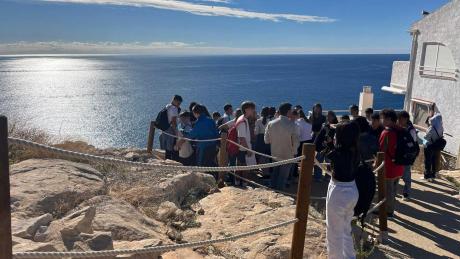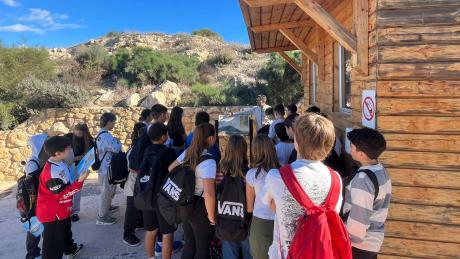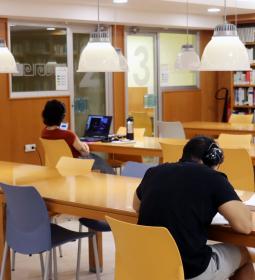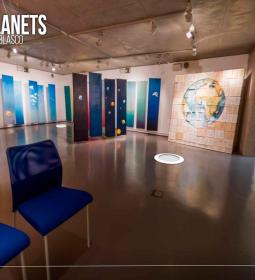Pellicer reiterated the invitation to schools that have not visited yet to "do so and join in this very interesting activity"
The Tossal de La Cala archaeological site receives approximately 300 student visits during the months of October and November

The Roman archaeological site of Tossal de La Cala received nearly 300 student visits during October and November, according to data provided by the Department of Historical and Cultural Heritage. This past Thursday and Friday, 160 first-year secondary school students from IES Mediterránea visited the site, divided into two groups of 80 students each. Next week, four more groups of students from El Murtal school are scheduled to visit.
In addition, last October, a group of fifteen Erasmus students from the Polytechnic University of Valencia, studying Tourism, visited the site. They experienced firsthand this Roman fortification from the 1st century BC, built by the troops of General Sertorius, and learned about the lives of the soldiers who lived there.
The Councillor for Historical and Cultural Heritage, Ana Pellicer, has stated that school visits to Tossal de La Cala archaeological site “are part of the various activities we offer to schools in Benidorm so that students can learn about the ‘castellum’ firsthand, thus complementing, in many cases, the subjects and knowledge they cover throughout the school year.” The councillor reiterated her invitation to other schools in the city that have not yet done so to “book their visits and join this fascinating activity.”
In her opinion, the younger generation has been able to discover “one of the great jewels of our heritage and become ambassadors for it within their families and social circles.” In fact, she continued, Tossal de La Cala has become a “fully accessible” archaeological site and the best canvas “for understanding how Roman fortifications were organised during the Sertorian Wars,” as well as being “a place from which to enjoy one of the best panoramic views of Benidorm.”
Finally, Pellicer indicated that the overall visitor numbers to the site reflect "the importance of the City Council's ongoing commitment to promoting this space, which is listed as a Cultural Heritage Site (BIC) and continues to attract public interest year after year."








